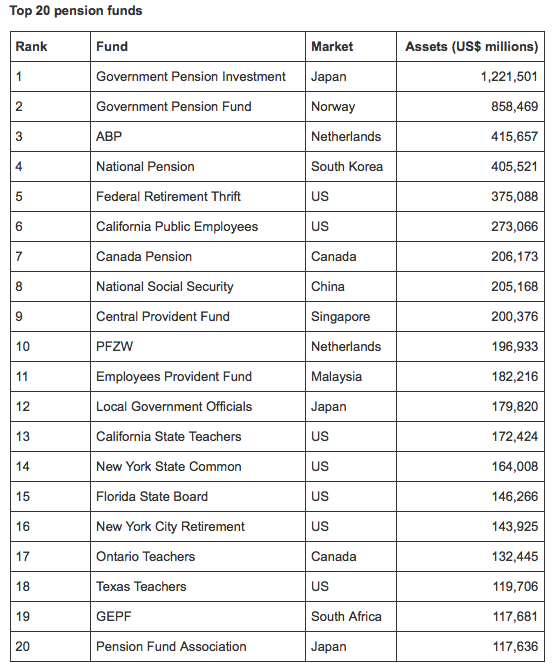
Pension funds are no strangers to using their clout to push for changes within the companies they invest in—in the last few years, dozens of funds have called for more sustainable business practices from fossil fuel-oriented companies and advocated new safety guidelines for gun manufacturers.
But on one issue, public pension funds are remaining silent. The issue: corporate tax avoidance. As reported by the New York Times:
In the outcry about the recent merger mania to take advantage of the tax avoidance transactions known as inversions, certain key players have been notably silent: public pension funds.
Many of the nation’s largest public pension funds — managing trillions of dollars on behalf of police and fire departments, teachers and others — have major stakes in American companies that are seeking to renounce their corporate citizenship in order to lower their tax bill.
While politicians have criticized these types of deals — President Obama has called them “wrong” and he is examining ways to end the practice — public pension funds don’t appear to be using their influence as major shareholders to encourage corporations to stay put.
Tax avoidance made headlines again last week when Burger King announced it was buying Tim Horton’s, a move which would make Burger King a “citizen” of Canada for tax purposes.
Pension funds didn’t speak up. But why? The NY Times speculates that investment performance has a lot to do with it:
Public pension funds may be so meek on the issue of inversions because they are conflicted. On one side, the funds say they care about the long term and the implications for their state. Calpers’s “Investment Beliefs” policy states that the pension system should “consider the impact of its actions on future generations of members and taxpayers,” yet most pension funds are underfunded and, frankly, desperate to show investment returns. Mergers for tax inversion can prop up share prices of the acquirers and clearly help pension funds, at least in the short term, show improved performance.
CalPERS is usually one of the first funds to use “activist investing” tactics to push for changes in the companies they invest in. But the fund has remained unusually quiet. The fund talked to the NY Times and gave an explanation:
The California Public Employees’ Retirement System, the nation’s largest public pension fund and typically one of the most vocal, has remained silent.
“We don’t have a view on this from an investor standpoint — we’re globally invested, as you know, and appreciate that tax reform is a government role,” Anne Simpson, Calpers’s senior portfolio manager and director of global governance, told me. “We do expect companies to act with integrity, whatever the issue at hand — that goes without saying. We also want to see a focus on the long term.”
When I pressed for more, her spokesman wrote to me, “We’re going to have to take a pass on this one.”
Mark Cuban recently stated that he would sell the stock of any company that moved out of the United States to avoid taxes.
Photo by TaxRebate.org.uk










